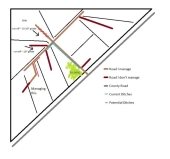


Rocket Mass Heater Plans: Annex 6" L-shaped Bench by Ernie and Erica
will be released to subscribers in:
soon!








5 Acres 25 degree west facing slope, conifer dominant on rocky silt/loam over basalt. Areas of clay.








5 Acres 25 degree west facing slope, conifer dominant on rocky silt/loam over basalt. Areas of clay.
 2
2




This is all just my opinion based on a flawed memory

 1
1








5 Acres 25 degree west facing slope, conifer dominant on rocky silt/loam over basalt. Areas of clay.
 1
1




 1
1




"You must be the change you want to see in the world." "First they ignore you, then they laugh at you, then they fight you, then you win." --Mahatma Gandhi
"Preach the Gospel always, and if necessary, use words." --Francis of Assisi.
"Family farms work when the whole family works the farm." -- Adam Klaus
 1
1




"You must be the change you want to see in the world." "First they ignore you, then they laugh at you, then they fight you, then you win." --Mahatma Gandhi
"Preach the Gospel always, and if necessary, use words." --Francis of Assisi.
"Family farms work when the whole family works the farm." -- Adam Klaus
 1
1




R Scott wrote:The walking tractor and rotary plow make a good start for foot paths. Not all the engine choices can handle that kind of slope!




5 Acres 25 degree west facing slope, conifer dominant on rocky silt/loam over basalt. Areas of clay.
 1
1




 1
1




Aim High. Fail Small.
Repeat.
 2
2




John Daley Bendigo, Australia The Enemy of progress is the hope of a perfect plan
Benefits of rainfall collection https://permies.com/t/88043/benefits-rainfall-collection
GOOD DEBT/ BAD DEBT https://permies.com/t/179218/mortgages-good-debt-bad-debt
 2
2








5 Acres 25 degree west facing slope, conifer dominant on rocky silt/loam over basalt. Areas of clay.












"You must be the change you want to see in the world." "First they ignore you, then they laugh at you, then they fight you, then you win." --Mahatma Gandhi
"Preach the Gospel always, and if necessary, use words." --Francis of Assisi.
"Family farms work when the whole family works the farm." -- Adam Klaus

|
Semper Ubi Sub Ubi. Latin for "Always Wear Underwear." tiny ad:
Learn Permaculture through a little hard work
https://wheaton-labs.com/bootcamp
|







